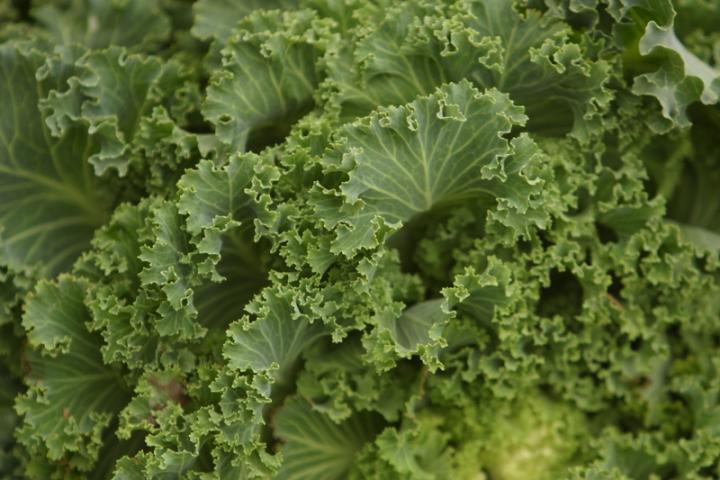
Kale is a hardy, cool-season green that is part of the cabbage family. It grows best in the spring and fall and can tolerate all fall frosts. Kale can be used in salads or as a garnish and is rich in minerals and vitamins A and C.
Planting
- You can plant kale anytime from early spring to early summer. If you plant kale late in the summer you can harvest it from fall until the ground freezes in winter.
- Mix 1-½ cups of 5-10-10 fertilizer per 25 feet of row into the top 3 to 4 inches of soil.
- Plant the seeds ¼ to ½ inch deep into well-drained, light soil.
- After about 2 weeks, thin the seedlings so that they are spaced 8 to 12 inches apart.
Care
- Water the plants regularly but be sure not to overwater them.
- Mulch the soil heavily after the first hard freeze; the plants may continue to produce leaves throughout the winter.
Pests/Diseases
- Cabbageworms
- Flea beetles
- Aphids
Harvest/Storage
- Kale is ready to harvest when the leaves are about the size of your hand.
- Pick about one fistful of leaves per harvest. Avoid picking the terminal bud (found at the top center of the plant) because this will help to keep the plant productive.
- Kale will continue growing until it’s 20 degrees F. It tastes even sweeter with a touch of frost.
- If you wish to extend your harvest, shield your kale from the cold with row covers. Or, create a makeshift cover with tarps and old blankets propped up by hay bales or something similar.
- The small, tender leaves can be eaten uncooked and used in salads.
- Cut and cook the larger leaves like spinach, but be sure to remove the ribs before cooking.
- You can store kale as you would any other leafy green; put the kale in a plastic bag and store it in the refrigerator. It should last about 1 week.
Recommended Varieties
- ‘Vates’, which is a hardy variety and does not yellow in cold weather. It also has curly, blue-green leaves.
- ‘Winterbor’, which resembles the ‘Vates’ variety, but it is frost tolerant.
- ‘Red Russian’, which has red, tender leaves and is an early crop.
Wit & Wisdom
- The chill of a moderate frost or light snow improves the flavor of kale.
- Embrace your leafy greens! Learn more about the health benefits of going green!
Recipes
- Kale, Sausage, and White Bean Soup
- Kale With Feta and Olives
- Kale Harvest Pie
Cooking Notes
Many people dislike kale because it is so crunchy and dry. It sounds odd, but a great way to make kale more tasty is to massage it!
Kale also makes a great compliment to spinach in a salad (try watching this video for great kale salad ideas), and kale chips can be a tasty treat. Find out more about kale and spinach.






